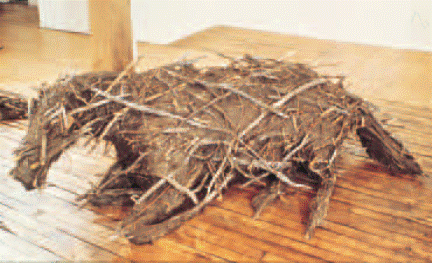
РЕЗОЛЮЦІЯ: Громадського обговорення навчальної програми статевого виховання
ЧОМУ ФОНД ОЛЕНИ ПІНЧУК І МОЗ УКРАЇНИ ПРОПАГУЮТЬ "СЕКСУАЛЬНІ УРОКИ"
ЕКЗИСТЕНЦІЙНО-ПСИХОЛОГІЧНІ ОСНОВИ ПОРУШЕННЯ СТАТЕВОЇ ІДЕНТИЧНОСТІ ПІДЛІТКІВ
Батьківський, громадянський рух в Україні закликає МОН зупинити тотальну сексуалізацію дітей і підлітків
Відкрите звернення Міністру освіти й науки України - Гриневич Лілії Михайлівні
Представництво українського жіноцтва в ООН: низький рівень культури спілкування в соціальних мережах
Гендерна антидискримінаційна експертиза може зробити нас моральними рабами
ЛІВИЙ МАРКСИЗМ У НОВИХ ПІДРУЧНИКАХ ДЛЯ ШКОЛЯРІВ
ВІДКРИТА ЗАЯВА на підтримку позиції Ганни Турчинової та права кожної людини на свободу думки, світогляду та вираження поглядів
- Гідрологія і Гідрометрія
- Господарське право
- Економіка будівництва
- Економіка природокористування
- Економічна теорія
- Земельне право
- Історія України
- Кримінально виконавче право
- Медична радіологія
- Методи аналізу
- Міжнародне приватне право
- Міжнародний маркетинг
- Основи екології
- Предмет Політологія
- Соціальне страхування
- Технічні засоби організації дорожнього руху
- Товарознавство продовольчих товарів
Тлумачний словник
Авто
Автоматизація
Архітектура
Астрономія
Аудит
Біологія
Будівництво
Бухгалтерія
Винахідництво
Виробництво
Військова справа
Генетика
Географія
Геологія
Господарство
Держава
Дім
Екологія
Економетрика
Економіка
Електроніка
Журналістика та ЗМІ
Зв'язок
Іноземні мови
Інформатика
Історія
Комп'ютери
Креслення
Кулінарія
Культура
Лексикологія
Література
Логіка
Маркетинг
Математика
Машинобудування
Медицина
Менеджмент
Метали і Зварювання
Механіка
Мистецтво
Музика
Населення
Освіта
Охорона безпеки життя
Охорона Праці
Педагогіка
Політика
Право
Програмування
Промисловість
Психологія
Радіо
Регилия
Соціологія
Спорт
Стандартизація
Технології
Торгівля
Туризм
Фізика
Фізіологія
Філософія
Фінанси
Хімія
Юриспунденкция
Tactile Texture
TEXTURE
Текстура
Unit 11. Texture
Negative Space
When it comes to the element of space, there is one question every artist must answer. That is the question of how much negative space to build into a work. Negative spaceis the empty spaces between the shapes or forms in two- and three-dimensional art.
How the artist answers the question about negative space will affect the viewer’s reaction to the work. Look back at the artwork in Figure 6–2 on page 13. There is far more negative space than form to this work. The abundance of negative space gives it a light, airy feel. Contrast this with the negative space in Figure 10–2. This sculpture seems heavier and more compact because there is less negative space.
Little negative space in a painting or drawing makes the work look busy. A lot of
negative space can express calm, peace, or even loneliness.

Figure 10–3
Richard Estes. Paris Street Scene.
1972. Oil on canvas. 101.6 _
152.4 cm (40 _ 60_). Virginia
Museum of Fine Arts, Richmond,
Virginia. Gift of Sydney and
Frances Lewis. © 1998 Richard
Estes/Licensed by VAGA,
New York, NY/Courtesy
Marlborough Gallery, NY.
Ex.2.Дайте відповіді на запитання:
1. The title of this work mentions a free-form shape from music. Can you find this shape?(Figure 10–1)
1. What makes this work a form rather than a shape? Has the artist used real or suggested space?(Figure 10–2)
2. What techniques has the artist used to give a feeling of space? (Figure 10–3)
Домашнє завдання:
Ex. 3 . Вивчити визначення образу, форми та простору.
Ex. 4 .Перекажіть текст.
Питання для самоконтролю:
1.What is shape?
2.Define form.What forms are closely related to the circle?
3.Identify and describe at least three techniques artists use to suggest space in two-dimensional art.
Ex. 1. Прочитайте та перекладіть текст:
His beard was rough as sandpaper. The lake was smooth as glass. You have probably read and maybe even written descriptions like these. The descriptions are effective because they bring to mind the sense of touch. They remind us of familiar textures. As an art element, textureis how things feel, or look as though they might feel if touched. Like space, texture in art can be tactile, texture that can be touched, or visual. In this lesson, you will learn about the double role of texture as an element.
Imagine the smoothness of mashed potatoes, the brittleness of a wheat cracker. Our sense of touch is always alert to the things around us. It helps us identify them and enjoy their feel. It also helps us avoid unpleasant touch sensations. Such an unpleasant sensation is suggested by the sentence that opens this lesson. Artists take advantage of our experience with textures to enrich their works. How an artist uses texture depends on whether he or she is working in two or three dimensions.
Sculptors, you may recall, work in real space. They also work in real texture. Refer
back to the sculpture in Figure 10–2 on page 23. How do you think this work would feel to the touch? Contrast that sensation to the one you might get touching the work in Figure 11–1.This sculpture of a horse is life-size. It is made of mud and tree branches. What words would you use to describe its texture? What do you think it would be like to ride this horse? Sometimes artists use texture to capture visual designs in three dimensions. The sculpture in Figure 11–3is such a work. Have you ever touched a raised design in fabric? Do you think the “clothing” worn by this guardian would feel smooth or rough to the touch?
 Figure 11–1
Figure 11–1
Deborah Butterfield. Horse.1977. Mud and sticks. Life-size.Zolla/Lieberman Gallery,
Chicago, Illinois.
Читайте також:
Переглядів: 685
| <== попередня сторінка | | | наступна сторінка ==> |
| | | Publishing |
|
Не знайшли потрібну інформацію? Скористайтесь пошуком google: |
© studopedia.com.ua При використанні або копіюванні матеріалів пряме посилання на сайт обов'язкове. |